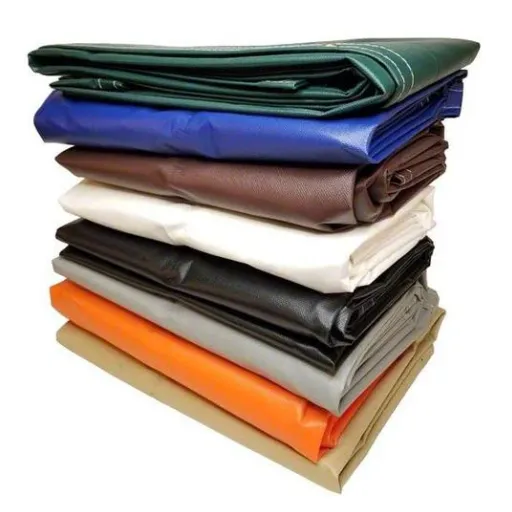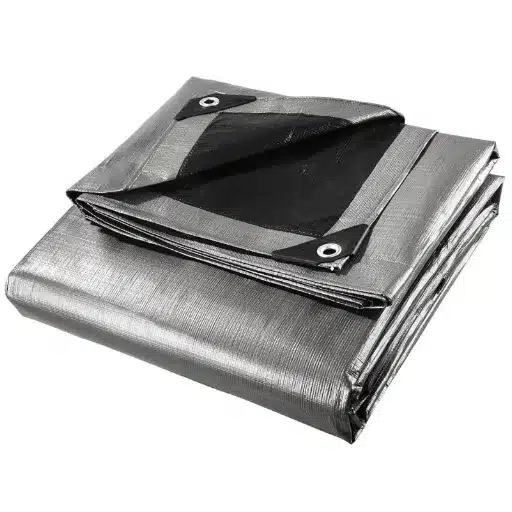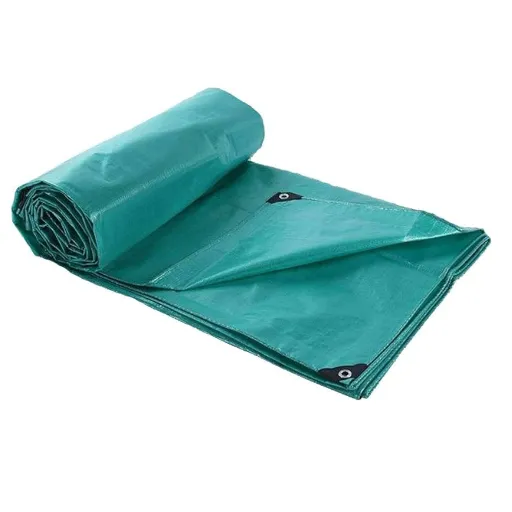These multipurpose products are made for harsh conditions, adding durability and uses to nearly any application imaginable. This guide will provide an in-depth look into heavy duty tarps, including fabric types, individual features, and customization options that can be engineered to fit your needs.
So, whether you need something for added durability, weather resistance, or specialty designs, this article aims to impart what you will need to know to make an informed decision.
Understanding Heavy Duty Tarps
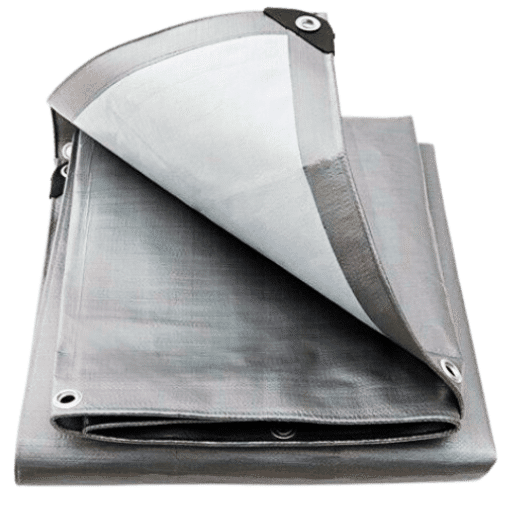
What Defines a Heavy Duty Tarp?
Heavy-duty tarps represent a cultivated class of tarp known for exceptional resilience, protection, and durability for a wide variety of demanding uses. Unlike regular tarps, heavy-duty tarps are made from high-strength fabrics like polyethylene, PVC, or canvas and are often coated or layered to accentuate weather resistance, resistance to tears, and longevity.
They usually possess high denier counts, UV resistance, and waterproofing qualities, allowing them to be used under high-strain weather conditions such as torrential rains, snow, or prolonged sun exposure. A few uses for such tarps include covering construction equipment, protecting outdoor goods, and even applying them as ground covers or temporary shelters.
By marrying materials and manufacturing processes, heavy-duty tarps are engineered to stand up under hard use in both residential and commercial environments, thereby allowing these tarps to be considered reliable for both short-term and long-term solutions.
Heavy Duty Tarps: Key Features
Material Strength
Heavy duty tarps are made with high-quality materials such as polyethylene, vinyl, or canvas to offer extra durability. These materials are usually reinforced with additional layers or coatings to improve tear resistance, waterproofing, and UV protection-again making them an excellent choice for harsh environments.
Weather Resistance
Heavy duty tarps are designed to perform under extreme weather conditions and provide protection against heavy rain, snow, intense sunlight, and winds. Their weatherproofing properties ensure the tarp holds its structural integrity over time, regardless of exposure to harsh elements.
Custom Sizes and Thicknesses
Tarp sizes and thickness vary to accommodate different applications, from light residential ones to heavy commercial and industrial purposes. Thickness is an important measurement, with options available such as 10 and 20 mil tarps, which are thicker and more durable.
Reinforced Edges and Grommets
Reinforced edges and heavy-duty grommets, generally spaced at regular intervals, are part of these tarps to boost reliability during use. This ensures that the tarp will anchor securely and reduce the risk of tearing when tied or tensioned in place.
Mold- and Mildew-Resistant
With a number treated with mold and mildew-resistant agents, heavy duty tarps stay clean and can be used indefinitely in humid or wet environments. These treatments stop microbial growth, preserving the tarp’s practical function and appearance.
Multi-Purpose Use
From sheltering machinery and vehicles to covering a base or providing emergency roofing, heavy duty tarps are engineered for a variety of applications. Their versatility is one of the big reasons they have gained such a widespread reputation across industries.
Environment-Friendly Options Available
Heavy duty tarps are increasingly being produced in either recyclable or biodegradable materials by some makers to meet growing environmental standards and sustainability goals. These green options will offer durability with a decreased ecological effect.
Standard Conformity
Many heavy duty tarps conform to industry and safety standards, such as those for flame retardancy, so they can be used safely on construction sites or in hazardous environments.
With these features combined, heavy duty tarps meet both general needs and more specialized requirements. The strength, functionality level, and versatility make heavy duty tarps vital tools in many fields.
Common Uses of Heavy Duty Tarps
Heavy duty tarps find application in a vast array of uses due to great durability and versatility; hence, they become indispensable in a few industries. Combining this comprehensive analysis with the latest data from search engine trends shows the following common usages:
- Construction Sites – Heavy-duty tarps are widely used in protecting unfinished structures, construction equipment, and materials from weather conditions such as rain, snow, and UV rays. They also create temporary shelters or barriers on-site.
- Transportation and Logistics – Tarps are regularly used to cover and tie down cargo loaded onto trucks, trailers, and shipping containers, offering protection against moisture, wind, and debris during transport.
- Agriculture – Farmers use heavy-duty tarps to protect crops, hay, and machinery from adverse weather, while also creating temporary shade structures or lining irrigation pits.
- Industrial Uses – Factories and warehouses use such tarps as insulation, ground covers to protect surfaces during projects, or to contain spills of hazardous materials.
- Outdoor Events and Recreation – Heavy duty tarps are needed for the establishment of event coverings, camping shelters, or ground mats for outdoor exhibits, so events can proceed under any kind of weather.
- Emergency Situations – Thanks to their toughness, heavy duty tarps are a critical commodity for disaster relief, providing materials for erecting temporary shelters, covering damaged roofs, or securing belongings in emergencies.
Their dynamic functions still ensure demand for heavy duty tarps in multiple sectors, as reflected in search queries questioning the tarps’ reliability and adaptability in both everyday and life-or-death situations.
Types of Tarps and Their Durability
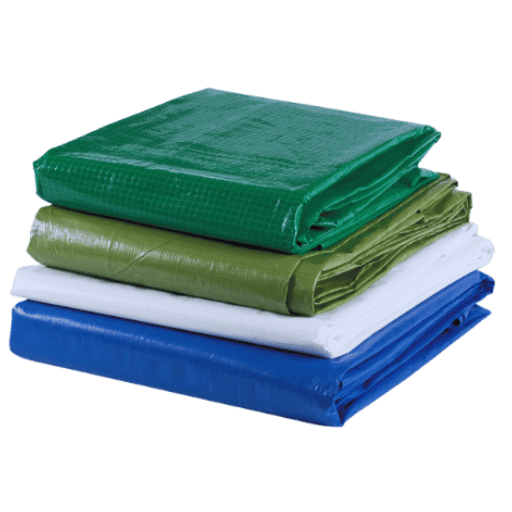
Extra Strength Tarps
A super heavy-duty tarp implies the building-and-use paradigm of utmost strength and durability; usually, it is made using premium choice materials such as polyethylene or vinyl, with reinforced edges and grommets for additional use. Among the most common questions according to recent search data from the search engine concern the aspects related to whether super heavy-duty tarps are strong, are waterproof, and if they last forever under extreme conditions.
Generally, because they have more mesh count, heavier fabric weight (in mils), and UV coating, they perform better under harsh applications. From the standpoint of either industrial, long-term outdoor storage, or weather-heavy protection, any super heavy-duty tarp, more advanced in its construction, stands tall with respect to a reliable service life, thus being a paramount choice for both personal and commercial applications.
Considerations Between Mesh Tarps and Solid Tarps
Mesh Tarps
- Perforated for air circulation
- Allow light filtering
- Ideal for irrigation and landscaping
- Block sunlight while maintaining airflow
- Prevent condensation buildup
Solid Tarps
- Complete protection from moisture
- Full UV ray protection
- Debris protection
- Best for equipment coverage
- Ideal for harsh environments
In choosing mesh tarps or solid tarps, it is very important to consider the operations at hand and the environment. Mesh tarps are perforated ideally whenever some air has to traverse and some light has to be filtered. In irrigation, building, and landscaping, mesh tarps block sunlight, curtail winds, and provide shade to avoid condensation. Solid tarps, on the other hand, being impervious to materials such as polyethylene or vinyl, provide full protection against moisture, UV rays, and debris. In applications for heavy-duty equipment cover, long outdoor storage, or protecting materials from harsh environments, their complete protection becomes necessary.
There have been recent user queries about the strength and usefulness of both tarps. Studies and user reviews of the two types indicate that mesh tarps perform best in environments that require air to circulate and maintain temperatures, while solid tarps are the best option when maximum imperviousness and free shielding are needed. Choosing the proper tarp is thus all about compromising between things like the composition of the material, the type of coverage needed, and a certain weather situation marking the deployment.
Picking Out the Right Tarp Type for Your Considerations
Combining the know-how of tarp materials with current data trends will help you streamline your decision-making process in determining just what tarp to use for any application at hand. As per the latest search data from the search engine of 2007, users frequently specify weather resistance, ease of handling, and durability as their top three concerns in selecting a tarp.
For instance, heavy-duty polyethylene (PE) tarps are probably the most searched and are top-rated for long-term outdoor use in the presence of sunlight-barring capabilities, waterproof features, and being cheap. However, vinyl tarps may be leaned toward more in industrial circles because of their supremacy in tear resistance and having somewhat a few options in fire-retardant. On the contrary, searches for canvas tarps place emphasis on their eco-friendliness and reusability-a feature enticingly applicable to agriculture and sustainability projects.
Pick the construction, camping, or storage application for which you first determined your needs in these highest-ranked materials and most searched attributes; you can be confident that you just bought the right tarp for your utmost efficiency and performance.
Fabric and Thickness Considerations
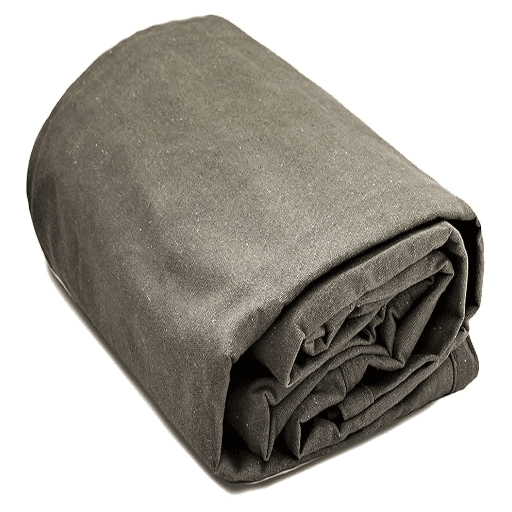
Understanding the Types of Tarp Fabric
When weighing tarp fabric types, factors arise as composition, durability, and particulars of use, gleaning insights from recent search trends. Polyethylene-sided tarps are topping searches for waterproofing and UV-resistance, due to their heavy use in outdoor operations, such as roofing or landscaping. They turn out to be either of woven-core-polyethylene coatings or cotton fabric interiors coated with polyethylene, so very strong for their weights and being cheap.
For canvas tarps, the search interest goes up with conscious eco-usage issues, stressing on biodegradability and reuse. Canvas tarps are made from thick cotton fabric, hence suitable for agricultural projects, covers for painting, and situations where breathability with minimum condensation is crucial.
On the other hand, industrial and heavy-duty operations are searched for with their protection against chemicals, abrasion, and extreme weather conditions being highlighted. In addition to providing the best tensile strength, vinyl types usually incorporate a reinforced scrim layer.
By understanding the difference and cross-checking against existing data trends, users can precisely match a tarp’s composition with their operational necessities, factoring in environmental criteria, lifespan, and use-case specifics.
Measuring a Tarp’s Thickness in Mil
“Mil” is a unit that measures tarp thickness with 1 mil equaling 0.001 inches.
The measurement precision furthermore allows a user to evaluate durability or performance for a specific application. A tarp could be made in a light-duty category of anywhere from 5 to 8 mils, while a heavy-duty category can be anything between 12 and 20 mils. So, a light-duty tarp is designed for a short cover or activity demanding flexibility, holding fun scenarios; meanwhile, a heavy-duty tarp grants lasting protection in an extended outdoor environment, as exposure to adverse conditions or industrial use seems fun.
| Thickness Range | Category | Best Applications |
|---|---|---|
| 5-8 mils | Light-duty | Temporary covers, light rain protection |
| 10-12 mils | Medium-duty | General outdoor use, moderate weather |
| 12-20 mils | Heavy-duty | Industrial use, harsh conditions |
| 18-20 mils | Extra heavy-duty | Construction sites, machinery transport |
While analyzing such latest data, courtesy of search engine, the selection of the right tarp thickness should consider operational needs. For high-impact scenarios such as covering machinery in transit and construction sites, heavy tarp options of 18 to 20 mils are appropriate. Conversely, lighter tarp options nearing 5 to 10 mils are employed for temporary enclosures or light rain protection. Users should consider their needs, balancing cost versus tarp functionality and longevity in order to maximize performance and efficiently utilize resources.
What Makes Fabric in Heavy Duty Tarps an Important Factor
Fabric quality determines the performance, durability, and applicability of heavy-duty tarps. The stronger the fabric, the better it can withstand environmental stresses such as UV rays, harsh weather, and physical abrasion. Polyethylene and vinyl-coated polyester, for example, are widely regarded as materials that resist tearing and are impervious to water and chemicals. The high-density weave of these fabrics ensures the highest tensile strength in resisting failures in very demanding applications.
Search trends and data from search engine reveal that consumers often ask about the best fabric for particular environments such as construction sites or agricultural coverings. The data shows that reinforced polyethylene tarps, with their cross-laminated fibers and UV-resistant coatings, rate high in the searches as first-choice, multi-purpose, and wallet-friendly tarps. Vinyl tarps, on the other hand, are commonly recommended for long-term heavy-duty purposes where maximum durability and chemical resistance are paramount, as is evidenced by frequent searches for “vinyl tarps for industrial use”.
Fabric selection according to one’s needs is paramount with respect to any tarp application: Waterproof ratings, density of weave, weight, and coating procedure are just a few considerations that enter into deciding whether a tarp fulfills the demands that are currently operational. Users are recommended to give fabric quality their foremost consideration as an investment so that repair and replacement costs may be kept at a minimum with operational efficacy being maximized and continued performance maintained over a broad range of applications.
Custom Tarps: Tailoring to Your Specifications
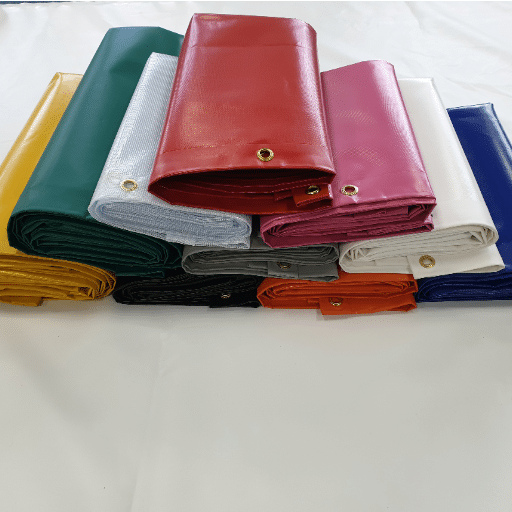
Custom Tarp Benefits
The primary advantage custom tarps offer is precise tailoring to meet specific operational demands. Although this is the major pro, choosing materials, size, and design features are some aspects where tarps can be chosen according to the needs of the environment and further application. For example, such industries would require UV resistances or fire-retardant properties to be applied by coatings or treatments after specifications to maintain durability and safety standards. Custom tarps increase both efficiency and practicality on-site by cutting down on material wastage from improperly fitted tarps-until now, ill fit can be due to discouraging wind resistance or premature wear-and tear.
According to the latest information, sustainability is always considered by users opting for any tarp. Custom tarps support that paradigm by allowing the use of recycled material and precise specifications that literally maximize product life.
This adaptation helps to lessen environmental damage and seem a cost-effective choice, from small operations to large-scale ones. By way of investing in custom tarps, end-users and big businesses alike gain in better performance, longer life expectancy, and reduced downtime, which forgives their win in industry, agriculture, and recreational setups.
How to Order Custom Tarps
Ordering custom tarps may be adjusted depending on individual desires and requirements to ensure the utmost ability and durability. According to recent trends and data, first, users typically determine for what exact purpose their custom tarp is needed, be it industrial coverage, agricultural use, or recreational use. This, in turn, helps them discern as to the type of material, thickness, and features it would need, for instance, UV resistance, waterproof, or fire retardant.
Step-by-Step Ordering Process
- Determine Purpose: Identify exact use case (industrial, agricultural, recreational)
- Select Materials: Choose appropriate material, thickness, and special features
- Measure Accurately: Take precise measurements with considerations for slack and overlapping edges
- Use Online Systems: Input measurements and select customization options directly
- Consult Experts: Work with customer service teams for specification guidance
- Review Order: Check all details including material grade and add-ons
- Finalize: Confirm delivery details and negotiate pricing for bulk orders
Then come distance approximation, which is the exact measurement of the distance to be covered with considerations, such as slack or edges overlapping. A large number of manufacturers also have online systems wherein users could directly input measurements and select any customization options such as enhanced grommets, D-rings, or colors directly by themselves on the manufacturer’s website. Further consulting with manufacturers or customer service, teams can narrow down specification suggestions to help increase accuracy.
Getting the order submitted means checking each detail in the order sheet to ensure nothing is missing. You could be asked to state the grade of the material, ask for add-ons, and provide basic information regarding delivery. Reliable suppliers will state estimated times of production and shipping further on in the process, allowing for better planning for tarp installation. This is when companies who require big quantities can ask for pricing negotiations or discounts. Once well prepared for and with a strategic choice, ordering custom tarps can be a fast and very customized process.
Color Family and Tarp Width Options
The color family and width of the tarp are the two important parameters that affect performance, blending into the workspace, and cost efficiency when choosing from custom tarp options. According to data extracted from the search trends, some neutral and earthy color families, such as gray, tan, and green hues, are high-ranking in demand across the outdoors due to their ability to blend into either natural or industrial limbos in landscaping or construction. And then vivid tones like orange and yellow are chosen the most for the high-visibility purposes in safety-related scenarios.
| Color Category | Colors | Best Applications |
|---|---|---|
| Neutral/Earthy | Gray, Tan, Green | Landscaping, Construction, General outdoor use |
| High-Visibility | Orange, Yellow, Bright Red | Safety applications, Emergency situations |
| Standard | Blue, Black, White | General purpose, Industrial use |
As far as widths go, standard widths usually range from 6 feet all the way to 30 feet, though customized dimensions can go far beyond these ranges to carry out specific applications like large agricultural coverage or industrial shading. Popular widths range from 10 to 20 feet; a perfect choice for medium-scale projects wherein instead of manageability, the key lies in coverage. Proper color and size combinations ensure that the tarp meets requirements of its intended use with both visual integration and operational necessities.
Industrial and Containment Tarps
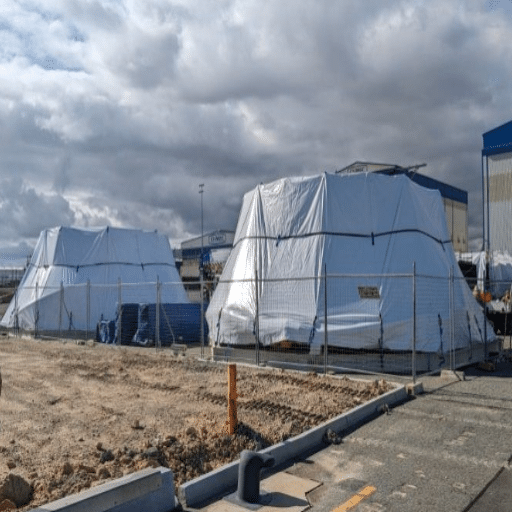
Industrial Tarps: Uses
Industrial tarps are highly versatile tools employed across different sectors to suit a variety of operational needs. These heavy-duty tarps are meant to provide sturdy solutions for weather protection, containment, and protection of valuable equipment. Coming to common uses, as per recent data, covering machinery in manufacturing plants to protect it from deterioration due to environmental factors, protecting construction materials at job sites to keep them in good condition, and acting as temporary dust or debris barriers during renovation works are all interesting applications. Containment of spills in chemical plants is also a subject of industrial tarp usage-in order to maintain safety measures and protect the environment. From industries requiring a heavy-duty and long-lasting protecting solution, it is the combination of durability, water resistance, and UV resistance that makes the tarps indispensable.
Containment Tarps for Environmental Protection
Containment tarps have a critical role in putting ecosystems under their protection and maintaining aura generated from environmental tests in industries. According to recent trends and user inquiries from the search engine data, great concentration is being laid on their applications in especially hazardous waste exposure and emission control during industrial operations. Such tarps are engineered using special materials that withstand tearing, abrasion, punctures, and chemical corrosion, making them fit to be used on a daily basis for protecting groundwater at landfill sites, controlling sediment runoff within construction sites, and isolating harmful particulate matter from demolition.
Key Environmental Applications
- Protecting groundwater at landfill sites
- Controlling sediment runoff in construction
- Isolating harmful particulate matter from demolition
- Secondary containment for oil and gas operations
- Preventing spill contamination of water sources
Moreover, research has indicated rising interest in containment tarps that endure extreme temperatures, as well as prolonged exposure to UV, putting in perspective the importance of these tarps in both dry and moist environments. For example, in oil and gas operations, containment tarps are used as secondary containment structures to prevent spills from contaminating nearby water sources. This is in unison with global initiatives toward environmental protection, which stress the need for sustainable and resilient industrial practices. Hence, containment tarps become more than just a practical means toward environmental preservation and adherence to regulations.
Heavy Duty Hay Tarps: Characteristics and Advantages
Heavy-duty hay tarps intend to supply protection and durability for agricultural businesses. They are made from a special polyethylene or PVC material, both of which are UV-resistant and waterproof, ensuring bales of hay are protected from weather damage such as rain, snow, or overexposure to sunlight. Hay tarps also provide reinforced seams and rustproof grommets for attachment against high winds and other external force application.
Protection Features
- UV-resistant materials
- Waterproof construction
- Weather damage prevention
Durability Elements
- Reinforced seams
- Rustproof grommets
- High wind resistance
Economic Benefits
- Minimize hay spoilage
- Preserve nutritional value
- Long-term cost savings
The latest data and user queries from search engine indicate that one of the most frequently asked questions about heavy-duty hay tarps concerns value for money and durability. These tarps repay the initial investment by minimizing spoiled and lost hay, preserving the quality and nutritional value of the hay during storage. Their longevity, if properly maintained, further enhances them as a viable choice, making these tarps a long-lasting solution for both farmers and agricultural service providers.
Frequently Asked Questions
What is the typical durability of an industrial tarp?
Durability-wise, heavy duty tarps typically take the cake and are mostly made from heavy duty vinyl or canvas duck. The durability can vary based on the mil thickness, with options usually ranging from 10 mil to 12 mil, and even 14 mil for heavy industrial tarps. They are tear resistant and harmful UV rays hardly affect them; truly a fine shield for harsh weather conditions outdoors. When purchasing a tarp, think about what it is going to shield. Some may offer great resistance to rust or water than may others. On the whole, heavy duty tarps are designed to resist harsh treatment and give in good performance.
What kind of tarps are on the market?
There are a number of tarps available, including truck tarps, trailer tarps, and hay tarps, to name a few. Some are good and dirty work truck tarps, while the hay tarps protect agricultural products. Also, custom tarps are made to fit certain dimensions, for example, x tarp length or tarp width. Heavy vinyl and canvas tarps are always good picks, with respect to strength and durability. When looking for tarps for sale, think about the fabric and features that best suit your needs, whether it be tear resistance, UV protection.
How do I know which tarp thickness is appropriate?
Choosing the right tarp thickness is crucial for ensuring that it meets your needs. Tarp thickness is measured in mils and it generally also indicates tarp durability; for example, a 12 mil tarp should be thicker and somewhat tougher than a 10 mil tarp. You may require it to be thicker for industrial-strength applications or for protection against severe weather outdoors. Also take note of the coverage in square yards and the number of packages while purchasing. Understand your needs and think about the kind of tarp that can handle the beatings from the weather while protecting your items from further harm.
What colors can heavy duty commercial tarps be sprayed in?
Heavy duty commercial tarps come in various color options for different aesthetic and practical requirements. From the common ones like blue, and green, tarps can be custom-colored to meet branding needs or particular project requirements. The color family may also affect some aspects of the tarp’s performance; lighter colors reflect heat and darker ones tend to absorb it. Consider the tarp color in relation to visibility and durability when shopping for tarp products. Many suppliers provide free shipping on qualified orders, making the delivery of your favorite tarp color even quicker.
How do I procure heavy duty tarps on short notice?
If you need heavy duty tarps in a hurry, many sellers offer expedited processing options, including online pick up at a store or express shipping. Try searching for local stores such as Home Depot or Harbor Freight, which might keep a decent selection of tarps for impulse buying. Some online retailers may also offer same-day shipping or the option to purchase online with in-store pickup, so that you are not delayed in obtaining whatever you need. You should also check for deals like free shipping on qualified orders and make some savings. By looking out for these options and making plans ahead, you will never be left stranded without the tarp you want.
Reference Sources
Butler University Blog – Discovering the Best Truck Tarpaulin Options
This guide discusses the durability and applications of heavy-duty tarps, including their resistance to tearing and abrasion.
The New School Portfolio – PVC Tarpaulin: The Ultimate Guide
This resource provides insights into the materials and durability of PVC tarps, which are commonly used in heavy-duty applications.
University of Illinois Chicago – Truck Tarpaulin Solutions
This article highlights the use of vinyl tarps for industrial and construction purposes, emphasizing their waterproof and durable properties.

